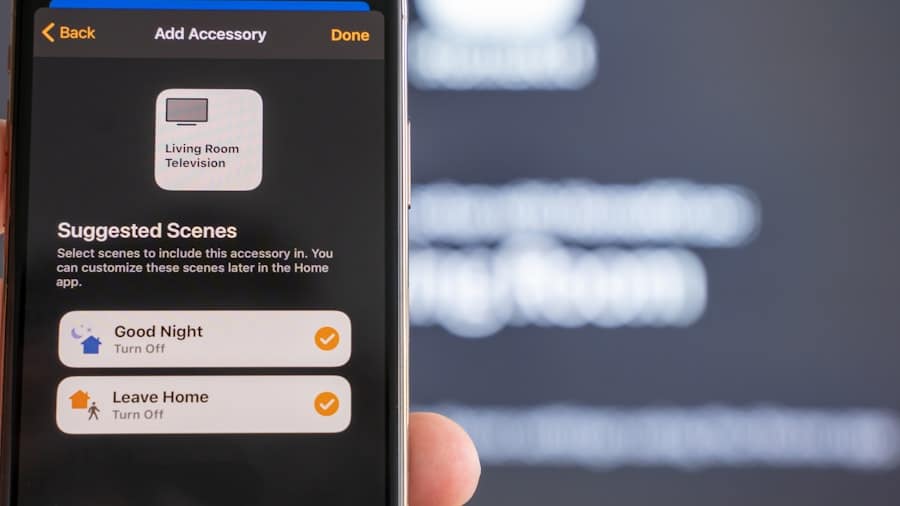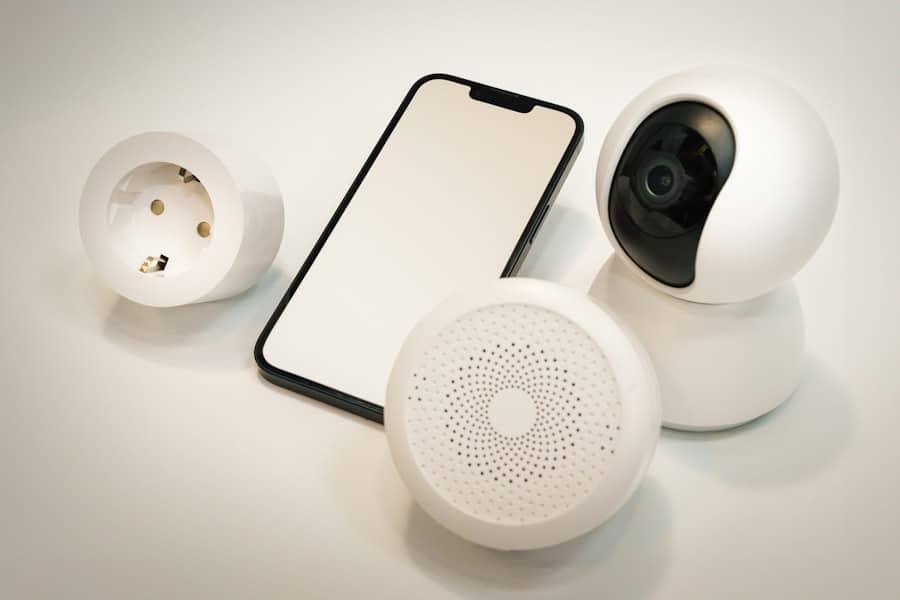As the global population ages, the need for effective solutions to support elderly individuals living independently has become increasingly pressing. Remote monitoring of elderly family members has emerged as a vital tool in this context, allowing caregivers and family members to keep an eye on their loved ones from a distance. This approach not only enhances the safety and well-being of seniors but also provides peace of mind to their families.
The integration of technology into elder care has transformed traditional caregiving methods, enabling a more proactive and responsive approach to health management. Remote monitoring encompasses a range of technologies and practices designed to track the health and daily activities of elderly individuals. This can include everything from wearable devices that monitor vital signs to home sensors that detect movement or inactivity.
The goal is to create a comprehensive system that allows for real-time data collection and analysis, facilitating timely interventions when necessary. As families grapple with the challenges of caregiving, especially when distance is a factor, remote monitoring offers a practical solution that leverages modern technology to enhance the quality of life for seniors.
Key Takeaways
- Remote monitoring of elderly family members allows for continuous tracking of their health and well-being from a distance.
- The Internet of Things (IoT) refers to the network of physical devices and objects that are embedded with sensors, software, and other technologies for the purpose of connecting and exchanging data with other devices and systems.
- Using IoT for remote monitoring of elderly family members can provide real-time data on their vital signs, activity levels, and environmental conditions, leading to early detection of health issues and improved care.
- Challenges in implementing IoT for remote monitoring include the need for reliable connectivity, interoperability of devices, and addressing privacy and security concerns.
- Examples of IoT devices and technologies for remote monitoring include smart home sensors, wearable health trackers, and telemedicine platforms.
Understanding the Internet of Things (IoT) and its Application in Remote Monitoring
The Internet of Things (IoT) refers to the interconnected network of devices that communicate with each other over the internet, sharing data and insights in real time. This technology has revolutionized various sectors, including healthcare, by enabling devices to collect and transmit data without human intervention. In the context of remote monitoring for elderly family members, IoT devices can provide continuous oversight of an individual’s health and safety, allowing caregivers to respond swiftly to any changes or emergencies.
IoT applications in remote monitoring can take many forms. For instance, smart home devices can track movement patterns within a residence, alerting family members if an elderly person has not moved for an extended period. Wearable health monitors can track heart rate, blood pressure, and other vital signs, sending alerts if readings fall outside normal ranges.
These applications not only enhance the ability to monitor health conditions but also foster a sense of independence for seniors, as they can remain in their own homes while still receiving the oversight they need.
Benefits of Using IoT for Remote Monitoring of Elderly Family Members

The benefits of employing IoT technology for remote monitoring are manifold. One of the most significant advantages is the ability to provide timely interventions. For example, if a wearable device detects an irregular heartbeat or a fall, it can immediately alert family members or emergency services, ensuring that help is dispatched without delay.
This rapid response capability can be life-saving, particularly for seniors who may be at risk for serious health issues. Moreover, IoT devices can help reduce the burden on caregivers. By automating routine monitoring tasks, family members can focus on providing emotional support and companionship rather than constantly checking in on physical well-being.
Additionally, many IoT solutions come with user-friendly interfaces that allow family members to easily access data and insights about their loved ones’ health and activity levels, fostering a more informed approach to caregiving.
Challenges and Considerations in Implementing IoT for Remote Monitoring
Despite the numerous advantages of IoT in remote monitoring, several challenges must be addressed to ensure successful implementation. One significant concern is the digital divide; not all elderly individuals are comfortable with technology or have access to reliable internet connections. This disparity can create barriers to effective monitoring and may lead to feelings of isolation among those who are less tech-savvy.
Therefore, it is crucial to consider user-friendly designs and provide adequate training for both seniors and their families. Another challenge lies in the integration of various devices and platforms. With a plethora of IoT devices available on the market, ensuring compatibility between different systems can be complex.
Families may find themselves navigating multiple applications and interfaces, which can be overwhelming. To mitigate this issue, it is essential to choose comprehensive solutions that offer seamless integration across devices, allowing for a cohesive monitoring experience that simplifies data management.
Examples of IoT Devices and Technologies for Remote Monitoring
A variety of IoT devices are specifically designed for remote monitoring of elderly individuals, each serving unique functions that contribute to overall well-being. Smart wearables, such as fitness trackers and smartwatches, are among the most popular options. These devices can monitor heart rate, sleep patterns, and physical activity levels while providing alerts for irregularities.
For instance, devices like the Apple Watch have built-in fall detection features that automatically notify emergency contacts if a fall is detected. In addition to wearables, smart home technologies play a crucial role in remote monitoring. Sensors placed throughout a home can track movement patterns and alert family members if unusual behavior is detected—such as prolonged inactivity or wandering outside designated areas.
Smart cameras equipped with motion detection capabilities can provide visual reassurance for family members while respecting privacy concerns through features like privacy zones. Furthermore, medication management systems equipped with reminders and alerts ensure that seniors adhere to their prescribed regimens, reducing the risk of missed doses.
Privacy and Security Concerns in IoT Remote Monitoring

As with any technology that collects personal data, privacy and security concerns are paramount in the realm of IoT remote monitoring. The sensitive nature of health-related information necessitates robust security measures to protect against unauthorized access and data breaches. Families must be vigilant about choosing devices from reputable manufacturers that prioritize data encryption and secure communication protocols.
Moreover, it is essential to educate elderly individuals about privacy settings and data sharing options associated with their devices. Many seniors may not fully understand how their information is being used or shared, leading to potential discomfort or reluctance to engage with technology. Transparent communication about how data is collected, stored, and utilized can help build trust between seniors and their families while ensuring compliance with privacy regulations such as HIPAA in healthcare settings.
How IoT Remote Monitoring can Improve Quality of Life for Elderly Family Members
The implementation of IoT remote monitoring systems has the potential to significantly enhance the quality of life for elderly individuals. By providing continuous oversight without intruding on their independence, these technologies empower seniors to maintain control over their daily lives while ensuring that help is readily available when needed. This balance fosters a sense of autonomy that is crucial for mental well-being.
Additionally, IoT solutions can facilitate social connections by enabling family members to stay informed about their loved ones’ activities and health status. Regular updates can prompt more frequent communication between seniors and their families, reducing feelings of loneliness and isolation that often accompany aging. For instance, a family member receiving alerts about an elderly relative’s daily activity levels may feel encouraged to reach out more often or even schedule visits based on observed patterns.
The Future of IoT in Remote Monitoring of Elderly Family Members
Looking ahead, the future of IoT in remote monitoring for elderly family members appears promising as technology continues to evolve. Innovations such as artificial intelligence (AI) and machine learning are poised to enhance the capabilities of IoT devices further by enabling predictive analytics that can anticipate health issues before they arise. This proactive approach could revolutionize elder care by shifting from reactive responses to preventive measures.
Moreover, as society becomes increasingly aware of the importance of aging in place, investment in IoT technologies will likely grow. Collaborations between tech companies, healthcare providers, and policymakers will be essential in developing comprehensive solutions that address both the needs of seniors and the concerns of their families. By prioritizing user-friendly designs, robust security measures, and seamless integration across platforms, the future landscape of remote monitoring will not only enhance safety but also enrich the lives of elderly individuals as they navigate their golden years with dignity and independence.
If you are interested in exploring the latest technology trends, you may want to check out this list of the best Android apps for 2023 to be helpful in enhancing the monitoring process. And if you are looking for high-quality headphones to improve communication and audio monitoring, you can read about the best headphones for 2023 in another informative article.
FAQs
What is IoT?
IoT stands for Internet of Things, which refers to the network of physical devices, vehicles, home appliances, and other items embedded with electronics, software, sensors, and connectivity that enables them to connect and exchange data.
How does IoT play a role in remote monitoring of elderly family members?
IoT devices such as smart home sensors, wearable health monitors, and video cameras can be used to remotely monitor the well-being and safety of elderly family members. These devices can track vital signs, detect falls, monitor medication adherence, and provide real-time alerts to caregivers.
What are the benefits of using IoT for remote monitoring of elderly family members?
Some benefits of using IoT for remote monitoring of elderly family members include improved safety, early detection of health issues, peace of mind for caregivers, and the ability to provide timely assistance in case of emergencies.
What are some examples of IoT devices used for remote monitoring of elderly family members?
Examples of IoT devices used for remote monitoring of elderly family members include smart home security cameras, motion sensors, smart thermostats, wearable health trackers, medication dispensers, and emergency call buttons.
What are the privacy and security considerations when using IoT for remote monitoring of elderly family members?
Privacy and security considerations when using IoT for remote monitoring of elderly family members include ensuring secure data transmission, protecting personal health information, and addressing potential vulnerabilities in IoT devices that could be exploited by hackers. It’s important to choose reputable and secure IoT devices and to regularly update their software to mitigate security risks.

